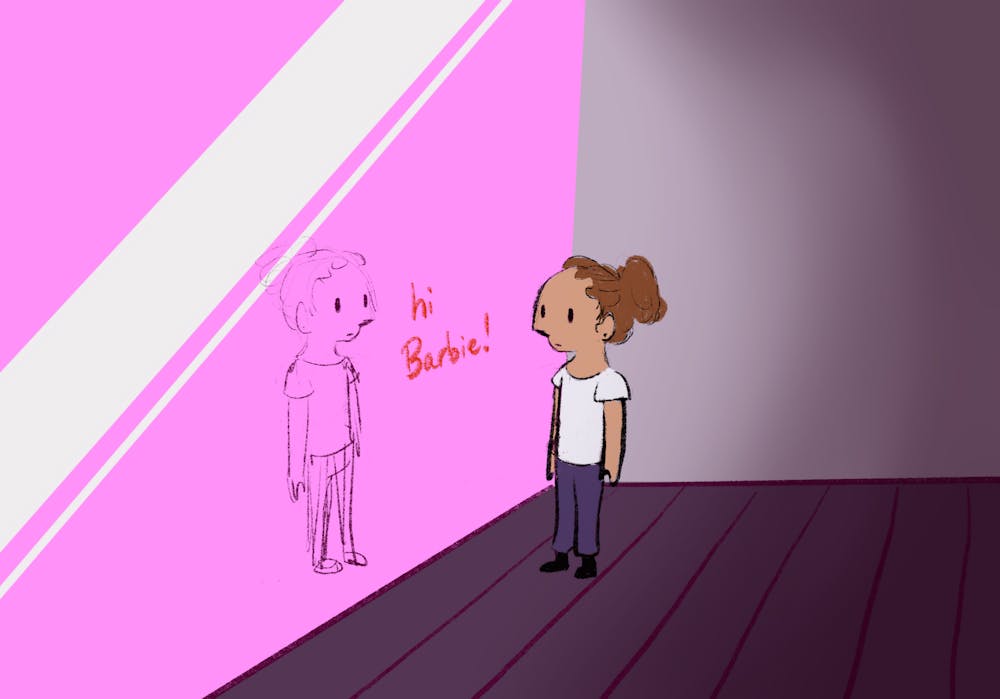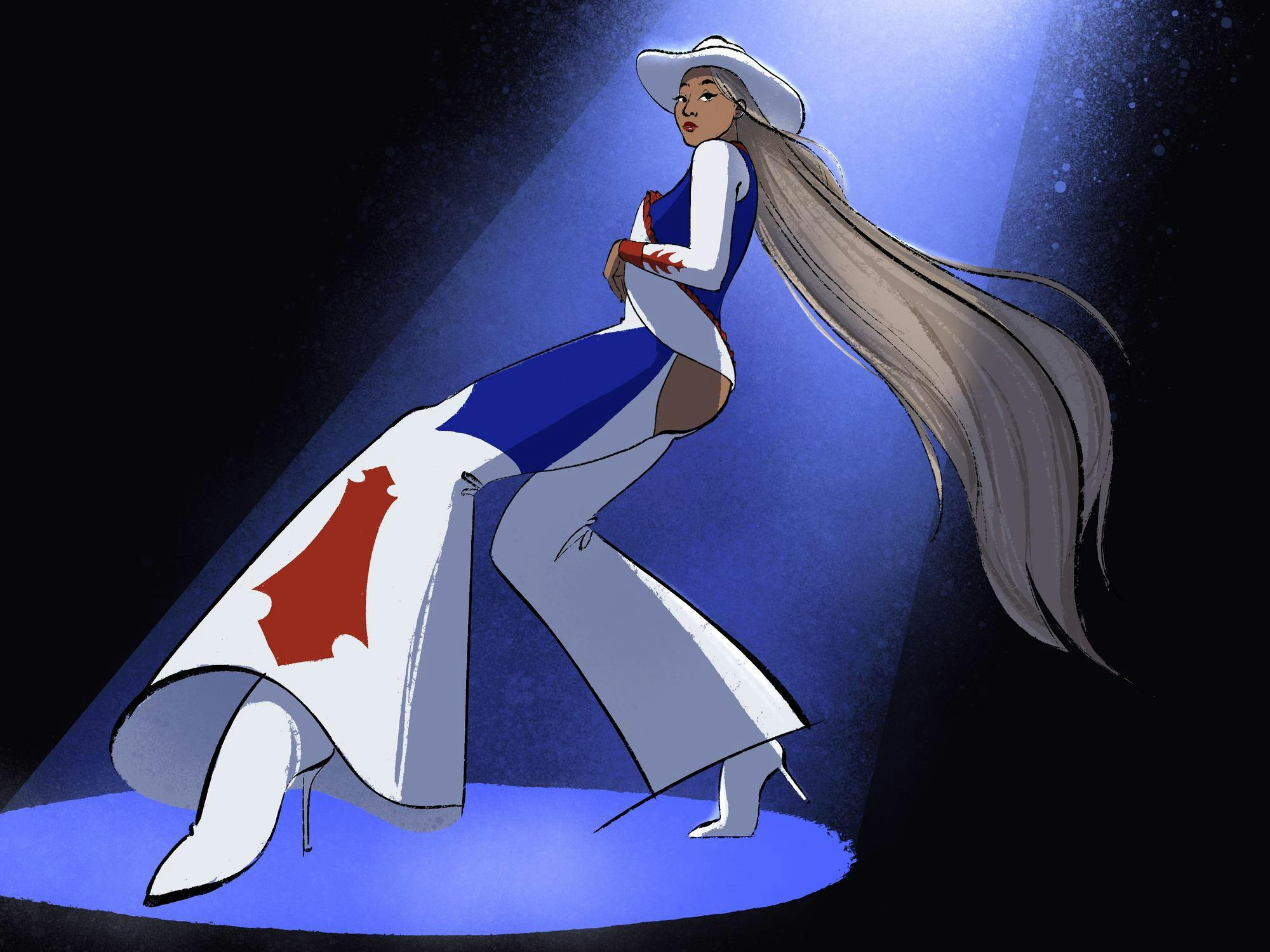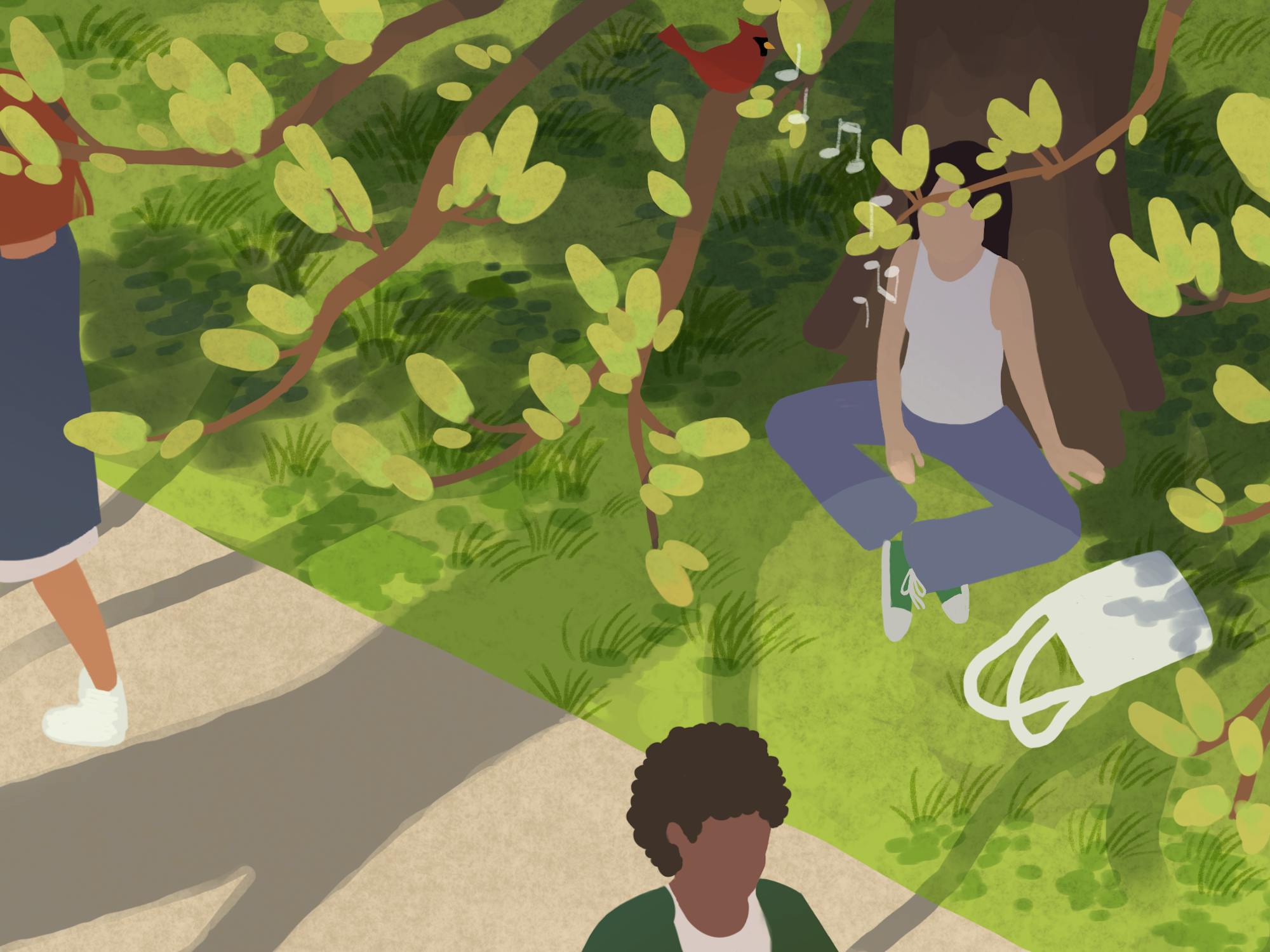For anyone with access to the internet, especially any woman-identifying person in her teens, twenties, or thirties, 2023 will go down as an unforgettable amalgamation of transient “girl” TikTok trends: girl dinner, girl's girls, for the girls, the girls who get it, girl math, even Gwen Stefani’s voice echoing “I’m Just a Girl” on an empty loop.
Many might see the turn to girlhood as a choice of political agency, an act of feminist rebellion—like holding a middle finger to the patriarchy and the hellish landscape of late-stage capitalism, both of which demand so much domestic, emotional, and workforce labor of “womanhood” in the modern era. Today, it often feels like if women want to do more in society, then they must simply do it all.
To accompany the embrace of girlhood, however, a few more problematic sentiments have arisen. Take certain creators from the recent trend of bimbo feminism for example. A particularly egregious example of this trend surfaced in a recent TikTok video by a creator who attempts to break down complex subjects “for the girls,” using simplified language and bright pink outfits to attract her audience. Recently she explained the Israel and Palestine conflict as if it were some trivial high school drama between “Izzy” and “Patty”—an offensive, bewilderingly tone-deaf approach.
Of course, many of these trends begin in the right place. Women are tired of hyper-femininity being associated with stupidity, of being shamed for choices they were pressured to make by society’s rigid standards of beauty, and of being burdened with the majority of labor in the household. Turning to girlhood is embracing nostalgia. After all, girlhood is arguably a time in a woman’s life when the threats of the patriarchy do not loom so large. It’s a time when a woman, depending on her circumstances, can dream of true love in a whole-hearted, naive way, unaware of the future turmoil she’ll be put through, of what her rights are and how her autonomy over her own body could be threatened years down the line.
This reclamation can be seen through one of the most basic of insults: “you throw like a girl.” Those within the TikTok trends seem eager to agree—and more. They eat, sleep, shop, dress, cry, feel, love, walk, talk, work, dream, think, and throw like a girl. If you can look past the infantilizing aspects of using the term “girl” to describe absolutely everything, you can see through to the core of those women who are just maturing and quickly realizing they want to turn back.
And yet it seems that despite all of these attempts to reclaim girlhood at an individual level, countless movies, TV shows, and books get it wrong when they attempt to portray girlhood for wider audiences. For many people, the experience of girlhood is closely tied to the female role models they were raised with—often in whatever form of media they consumed. Disney is one particularly timely example, as it has long been the subject of feminist critiques for playing into negative stereotypes and limited beauty standards, yet has initiated noticeable changes to counteract these claims in recent years.
For decades, Disney Princess movies have given audiences a diverse array of female protagonists, shaping the way girls perceive themselves and the world around them from a tender age. From Snow White and the Seven Dwarfs in 1937 to its upcoming 2024 remake, princesses have brought their unique qualities and challenges to the screen. However, the debate rages on about the correct way—if one exists—to create the perfectly nuanced yet nostalgic female protagonist.
There’s been a recent effort to retell older Disney stories in a more feminist light, which many on the internet have attributed to the somewhat unwanted influence of the “girl-boss” movement. Rachel Zegler, the lead in the 2024 remake, has received criticism for her apparent lack of enthusiasm and, at times, distaste for the role. In a video which has been recently circulating, Zegler controversially tells an interviewer that “it’s no longer 1937” and her version of Snow White is going to be “dreaming about becoming the leader she knows she can be.”
In fairness to Zegler, the princess archetype does indeed have its criticisms, particularly regarding its traditional representations of femininity and encouragement of women to dream about love rather than personal ambition. Many early Disney princesses, such as Cinderella and Sleeping Beauty, were passive and reliant on male characters to save them, thus reinforcing gender roles and the repetition of the damsel-in-distress narrative. As a result, Disney has taken steps to modernize its princesses by introducing more independent and self-reliant characters in recent years. Yet those who criticize Zegler, along with others who possess nostalgia for old-timey princesses, would argue that dreaming of true love does not necessarily inhibit the princess’s agency or character. In this vein, it’s important to represent women with softer life aspirations, whose dreams are founded on a pursuit of happiness rather than the capitalist narrative driven by the idealization of productivity and independence.
This leaves the shaping of women and the future of girlhood at a crossroads. If women don’t want to be portrayed in the girl-boss, Zegler-type manner, then is the damsel in distress dreaming of true love really the answer? Were Disney Princesses ever truly a good model for us? Why can’t there be something newer and fresher to break apart from these mutually problematic narratives?
While Disney may still be working to get the deep nuances of girlhood “right,” it is important to recognize that sometimes we don’t succeed either. For example, I can’t help but question the recent shaming of “pick me” girls or girls who “aren’t like other girls” I’ve seen plastered all over the internet. What seems to have started off as a well-intentioned attempt to find a language for critiquing the everyday, internalized misogyny in our fellow women has instead transformed into a language which excludes those who do not belong. Ironically, it’s become a sort of witch hunt to single out all those who do not fit the internet’s narrow and particular definitions of femininity and girlhood. It’s important to remember that, at the end of the day, femininity is a construct of the patriarchy and consequently a performance. As such, there is nothing inherently righteous about being girly, nor is there anything inherently righteous about looking down on those who choose to be girly.
It's often lonely to be a girl, but there’s comfort in the feeling that you can finally belong to a community of other girls. And yet that’s just it: our idea of femininity is so narrow that we’re all begging to be let into the girl’s club. Alienation within our own gender perpetuates the fear of never being feminine or girly or pretty or thin or palatable enough, an idea complicated by the desire to be a girl who empowers all her girls beyond this limited definition. I don’t mean to say that our adoption of certain styles of language to define ourselves, including the term “girl’s girl” and countless others, can’t be silly, harmless sources of fun. At the same time, however, we should still maintain an awareness of the exclusions these terms ultimately entail. Much of the conversation surrounding girlhood enforces a strict gender binary which serves to divide us, excluding those who do not belong in the incredibly limited, two ways of seeing the world.
And yet, as a woman, it’s almost impossible for me to say that there isn’t something completely freeing about logging onto TikTok and being able to find a video of a woman doing something stupid and absurd and messy and altogether non-conventionally girl-like with the caption: “This is girlhood.”
It’s times like these when I can finally let out a long, cathartic laugh at the revolutionary idea that a girl can just be.





